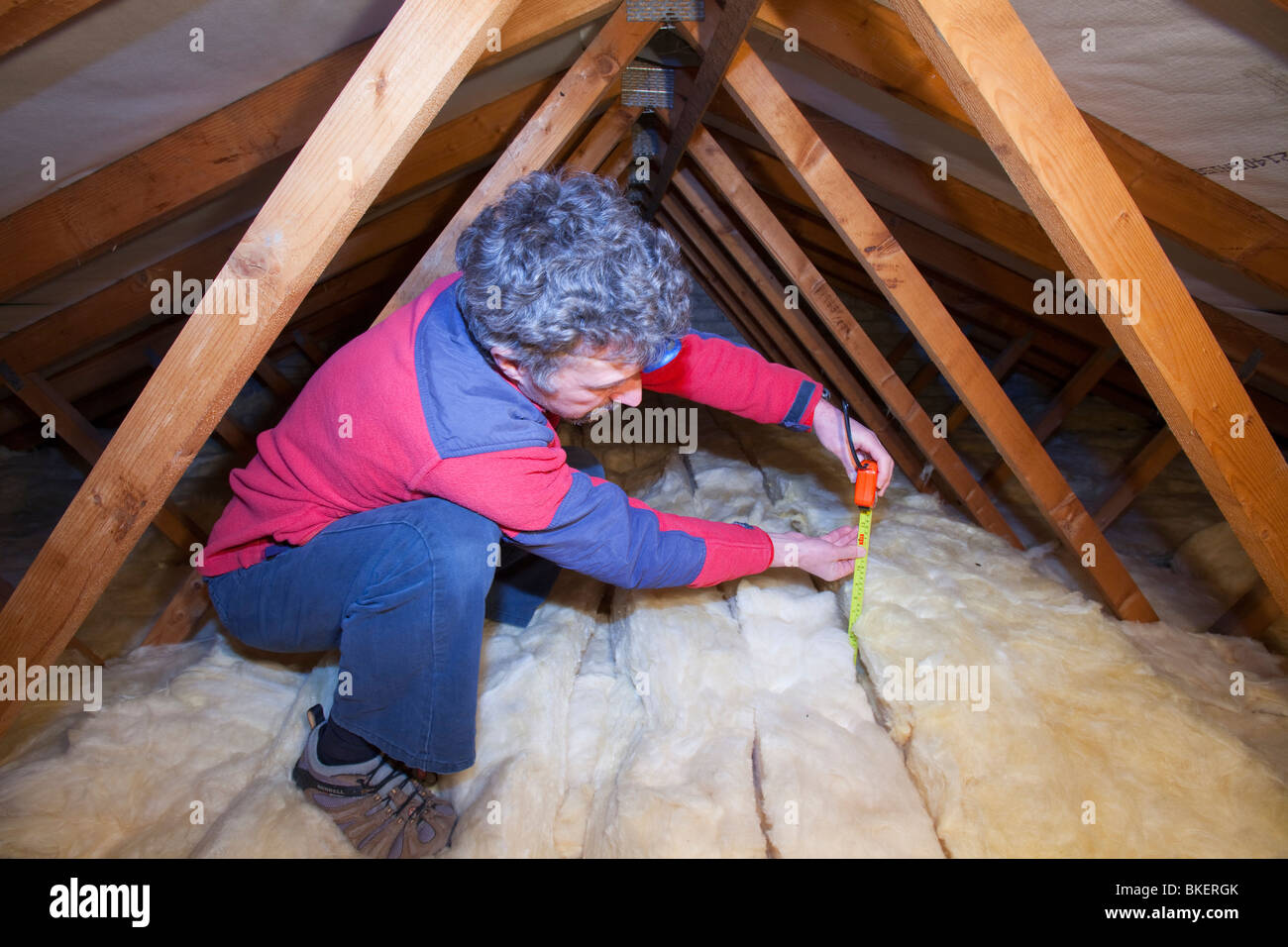It is expressed in watts per meter squared kelvin w m 2 k.
Measurement of increased attic insulation.
Courtesy of department of energy.
Grab a tape measure and a flashlight to see what kind of insulation you already have in the attic and how deep it is.
Inspecting your attic insulation.
The higher the number in the r value the more effective the insulation is.
Your attic should have a certain amount of insulation in it and the recommended level of insulation for your attic is dependent on where you live.
The usual standard is at a temperature difference of 24 c 43 f at 50 humidity with no wind a smaller u factor is better at reducing heat transfer.
First things first you need to go up into your attic inspect the condition of the insulation and calculate the current level of insulation.
Measure the area needing insulation.
An r value is a measure of a given material s thermal resistance or its ability to inhibit warm air movement toward colder spaces.
Often manufacturers stamp r values on the paper side of.
The amount of insulation a material provides is measured by its r value.
Multiply the length times the width to determine the square footage of the space.
Existing 3 4 inches of insulation.
Add insulation to attic.
Decide on the type of insulation to use.
When adding additional insulation you do not have to use the same type of insulation that currently exists in your attic.
This means that the higher the u value the worse the thermal performance of the building envelope.
Find your zone on the map and then use the chart to determine the level of insulation you need to properly insulate your attic walls floors and crawlspaces.
Houses built before the 1970s probably have an r value of 11 or less but today s standards call for r values as high as 38 or more depending on the house s location.
The higher the r value the better the thermal performance of the insulation.
Cellulose insulation is calculated based on the depth of the blown in insulation.
Achieving greater r values in attics the higher the r value the better the thermal performance of the insulation.
The recommended level for most attics is to insulate to r 38 or about 10 to 14 inches depending on insulation type.
Recommended insulation levels for retrofitting existing wood framed buildings.
Add the right kind of insulation.
Measure the length and width of the area you need to insulate.
One easy way to tell if you need more insulation is by looking across the span of your attic.
Your insulation levels should be well above the rim joists.

